Classroom Activity : Military Tactics in the English Civil War
The Royalist and Parliamentary armies used similar tactics and weapons during the English Civil War. Before a battle began both sides would line up facing each other. In the centre would be the infantry brigades of musketeers and pikemen. On each side of the infantry were the cavalry. The right-wing would be led by the lieutenant-general, the left-wing by the commissary general.
The heavy artillery was stationed at the rear where it could fire over the heads of the infantry. Smaller cannons, that fired nails and scrap iron in canvas bags, were positioned in front of the infantry.
Most soldiers were provided with armour that covered their breasts and backs. Armour was expensive and on many occasions some members of the infantry were forced to wear leather tunics instead. Although completely inadequate against gunfire, these tunics did provide some protection against swords.
The pikeman carried pikes that were between twelve and eighteen feet long. When the enemy employed a cavalry charge, the musketeers sheltered behind and between the pikemen. During the cavalry charge the pikemen aimed their pikes at the chests of the oncoming horses.
Musketeers carried a matchlock. Although the matchlock was not very accurate it could kill a man from three hundred yards. Because of the state of medical welfare at that time, any shot wound would probably result in the soldier dying.
The main disadvantage of the matchlock was the time it took to reload after each shot. To solve this problem, musketeers in the front line fired their matchlocks and then they retired to the back to reload.
Another strategy involved the musketeers in the first line kneeling, the second line crouching and the third line standing. The three lines of musketeers all fired at the same time. After firing, these men went to the back and were replaced by the next three lines of musketeers.
The men in the cavalry also carried either a short-barrelled musket or a flint-locked carbine. The main strategy was to advance at a quick trot until in range of the enemy. The men in the front fired, then wheeled away. In their second charge they advanced at full gallop using either a short sword or cutlass.
In the Civil War, the opening of the battle usually involved groups of cavalry. The main objective was to make the opposing cavalry run away. When that happened, the victorious cavalry turned on the enemy infantry.
Primary Sources
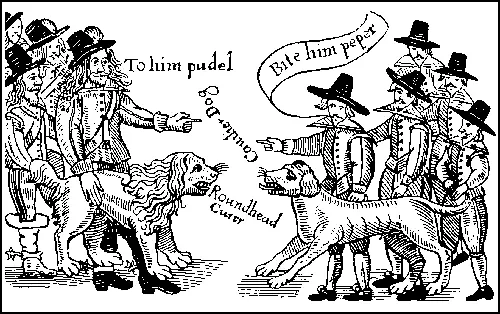
(Source 2) Edward Walker was a member of the Royalist cavalry at Naseby.
The first charge was by Prince Rupert and his troops... The infantry only made one volley... they were soon in great disorder..
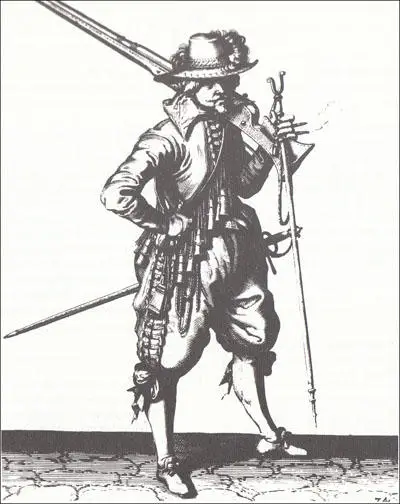
(Source 4) Sir Richard Bulstrode served in the Royalist army at the Battle of Edgehill.
Just before we began our attack, Prince Rupert passed from one wing to the other, giving orders to the cavalry, to march as close as possible, to receive the enemy shot, without firing our pistols, till we broke in amongst the enemy... after a small resistance... we were masters of their cannon... Prince Rupert... eagerly pursued the (right-wing of the parliamentary cavalry), who fled... if we had only kept our ground after we had beaten the enemy, and not left our foot naked to their cavalry... we might have made an end of the war.
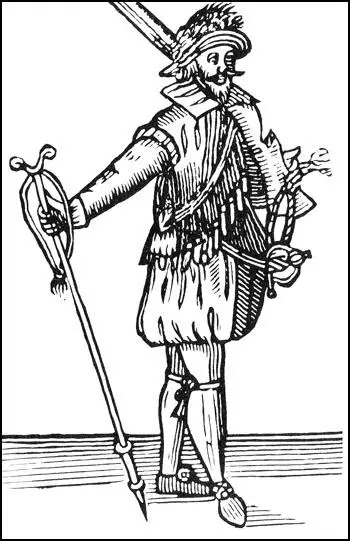
(Source 6) Dr William Harvey served as a surgeon in the Royalist army. Later he described what happened to Sir Adrian Scrope when he was wounded at Edgehill.
Sir Adrian Scrope was dangerously wounded, and left amongst the dead men... The local people stripped him, which helped to save his life. It was cold, clear weather, and a frost that night, which stauched his bleeding, and about midnight, or some hours after his hurt, he awaked, and was forced to draw a dead body upon him for warmth.
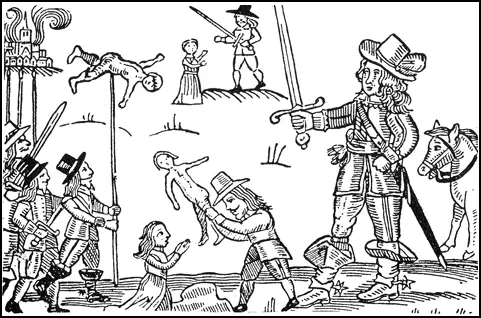
(Source 8) Major R. Barnes, Soldiers (1963)
Matchlock guns of the heavier type had to be fired from a rest... reloading involved over thirty motions... Musketeers
carried twelve or eighteen measured charges in the small bottle-shaped containers attached to the shoulder-belt, a bag of bullets and a small horn of priming powder, also attached to the belt, over the right hip. They fired by means of a smouldering cord, or match... When in action, to save time, they held two or three bullets in their mouths.
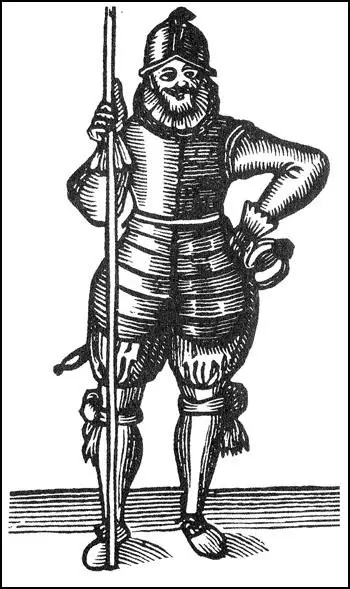
Questions for Students
Question 1: Read the introduction and study sources 3, 5 and 8. Describe the dangers faced by musketeers on the battlefield during the English Civil War.
Question 2: Use the sources in this unit to explain the weapons and tactics used during the English Civil War.
Question 3: One of these sources contains information that is probably inaccurate. Find the source and explain why you think it is inaccurate.
Question 4: Describe the traditional battle formation used during the English Civil War. Explain why they used these tactics.
Question 5: Use the information in source 8 to describe the objects that the musketeer is carrying in source 3.
Question 6: (a) Describe what is taking place in source 7. (b) Do you think these events actually happened like this? (c) Why is it important for historians to study visual sources produced by both sides in the English Civil War?
Answer Commentary
A commentary on these questions can be found here
Download Activity
You can download this activity in a word document here
You can download the answers in a word document here
